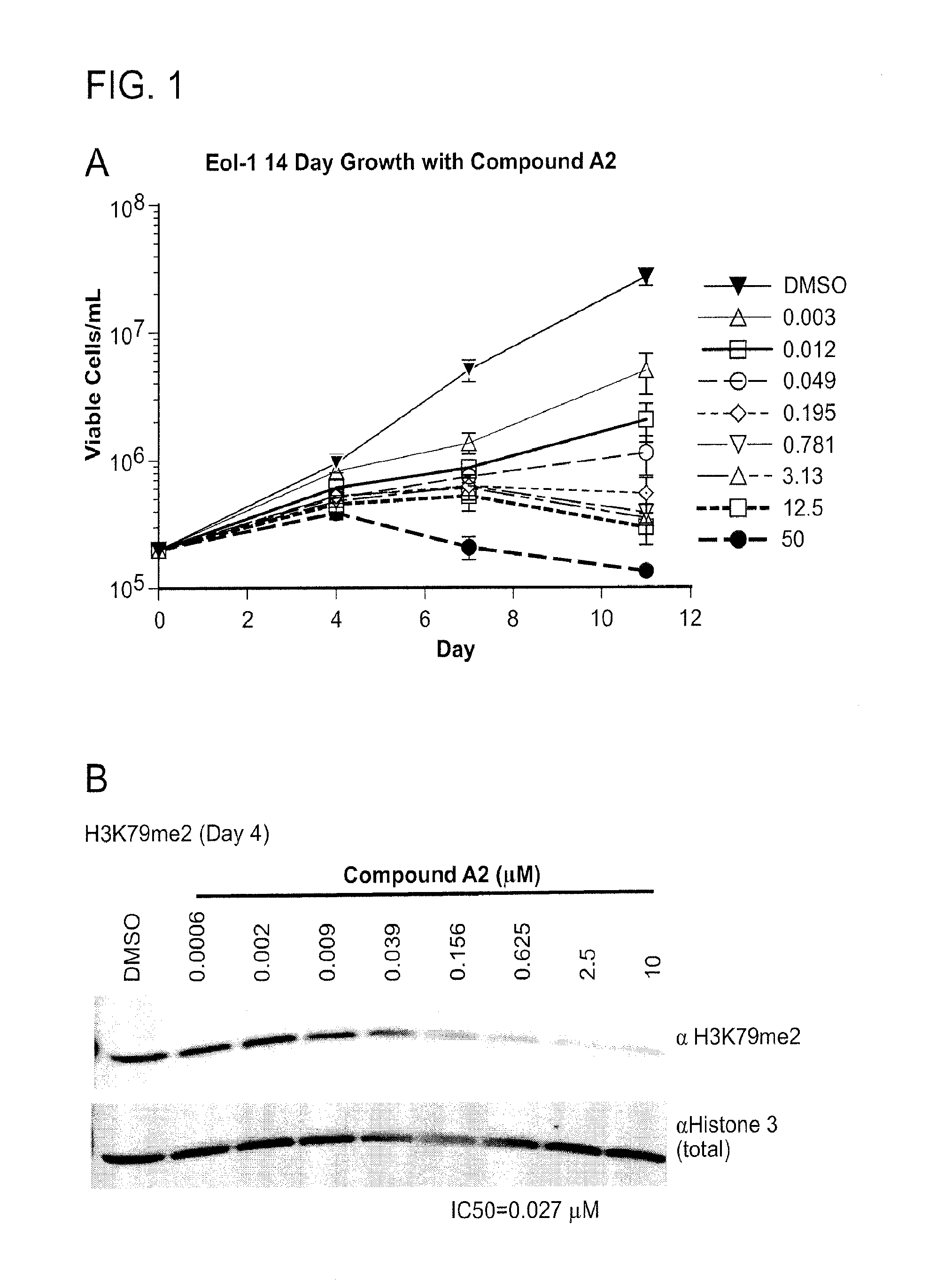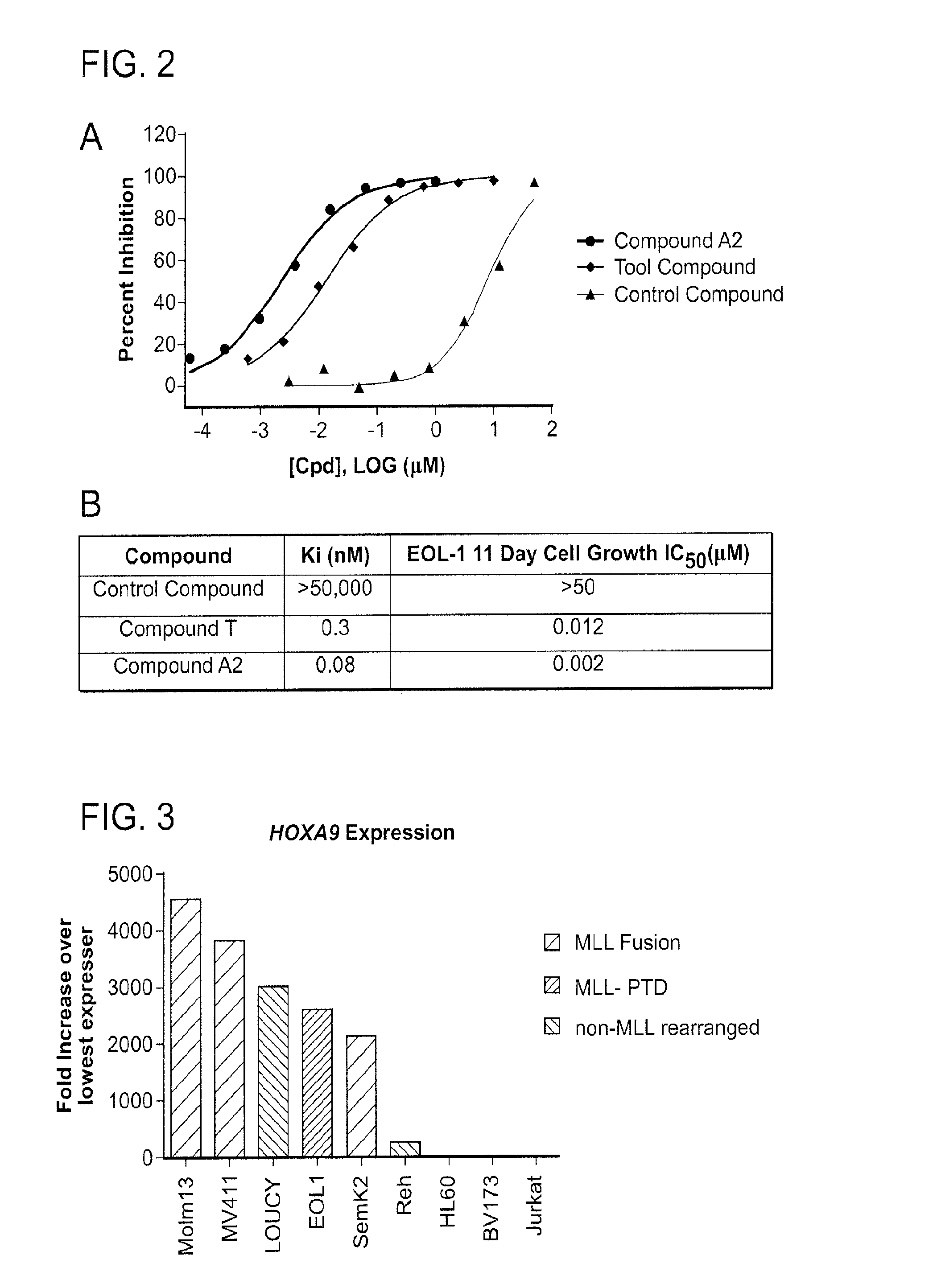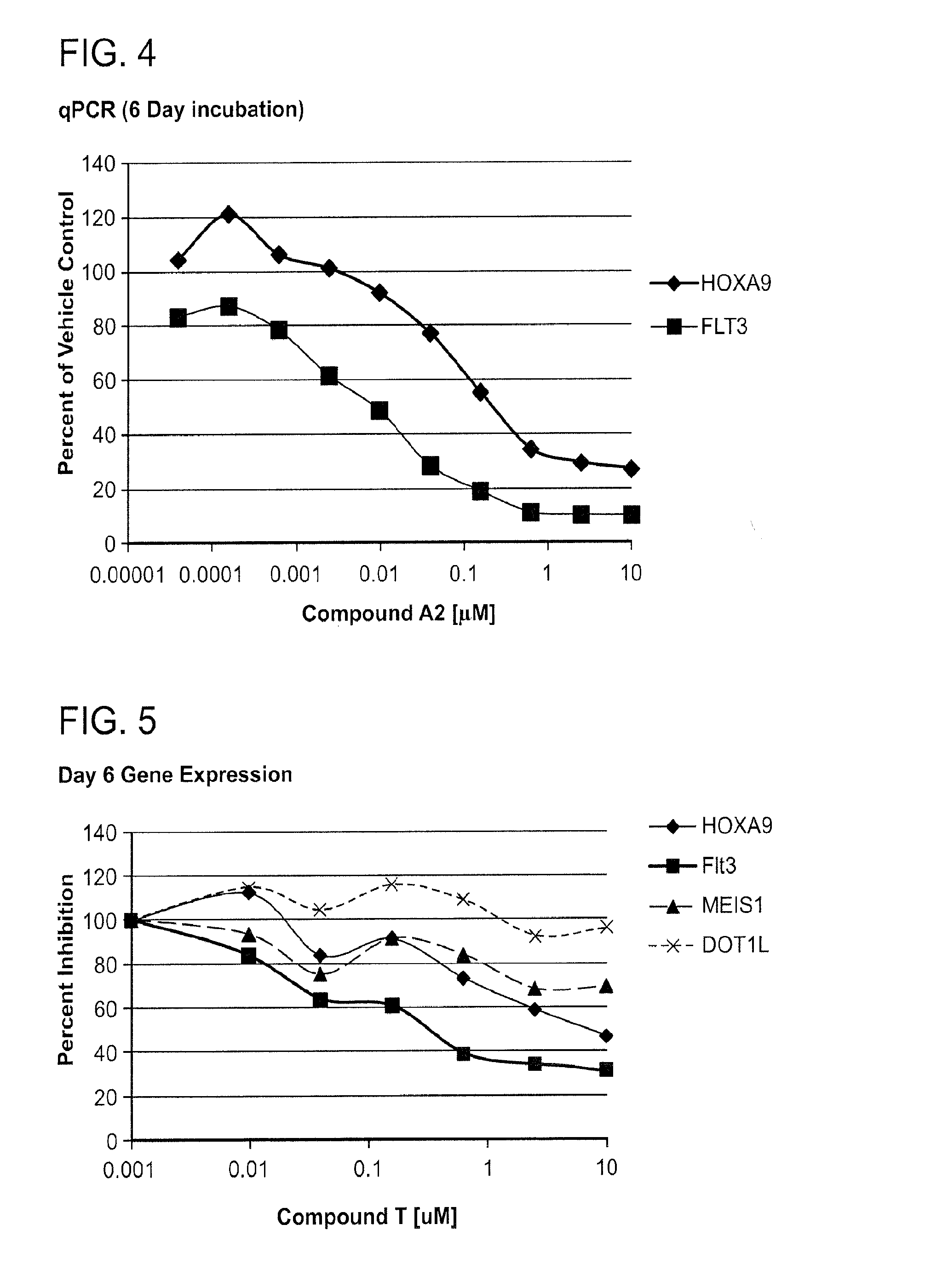Dot1l inhibitors for use in the treatment of leukemia
a technology of dot1l and leukemia, applied in the field of cancer treatment, can solve the problems of disease state and control disruption, and achieve the effect of increasing the level of hoxa9
- Summary
- Abstract
- Description
- Claims
- Application Information
AI Technical Summary
Benefits of technology
Problems solved by technology
Method used
Image
Examples
example 1
General Methods
[0555]Cell Culture:
[0556]Human leukemia cell line EOL-1 (Catalog # ACC-386) was purchased from DSMZ and were grown in Roswell Park Memorial Institute medium (RPMI) with 10% Fetal Bovine Serum (FBS). Cells were kept in log growth as outlined in the technical data sheet provided by the vendor.
[0557]Cell Growth and Viability Assay
[0558]Exponentially growing EOL-1 cells were plated in 96-well plates at a density of 3×104 viable cells / well. Each treatment was seeded in triplicate with a final well volume of 150 μLs. Cells were incubated with increasing concentrations of DOT1L inhibitor up to 50 μM. Viable cell number was determined every 3-4 days for 11 days using the Guava Viacount assay (Millipore #4000-0040) and analyzed on a Guava EasyCyte Plus instrument according to the manufacturer's protocol. On the days of cell counts, growth media and inhibitor were replenished and cells maintained in log phase culture by reseeding at a density of 5×104 viable cells / well. Total c...
example 2
Effect of DOT1L Inhibition on Cell Growth and Viability
[0568]The effect of DOT1L inhibitors on leukemia cell growth and viability was investigated. EOL-1 cells, a leukemia cell line characterized by MLL PTD, were plated in 96-well plates at a density of 3×104 viable cells / well. Cells were incubated with increasing concentrations of DOT1L inhibitor between the 0.003 μM-50 μM. The number of viable cells was determined every 3-4 days for 11 days. Cells were maintained in log phase by reseeding and replenishing growth media and the indicated concentration of DOT1L inhibitor on each day of cell counts (Day 0, Day 4, Day 7, and Day 11). Total cell number was expressed as split-adjusted viable cells per well. DMSO-treated cells were used as a control.
[0569]FIG. 1A depicts the results of the cell growth and viability assay after treatment with Compound A2 for 11 days. DMSO-treated cells continued to grow exponentially. However, cell growth was significantly inhibited under treatment with Co...
example 3
Inhibition of DOT1L Methyltransferase Activity
[0571]Inhibition of methylation of H3K79 was assessed after 4 days of treatment of DOT1L compounds in exponentially growing EOL-1 cells.
[0572]H3K79 methylation status after Compound A2 treatment was first examined by immunoblot. Following treatment, cells were harvested and histones were extracted. Western blot analysis was performed using antibodies specific for H3K79me2 and total histone 3 (as a control). Signal intensities specific to H3K79me2 was quantified and normalized to that of the total histone 3 signal. The results of the western blot analysis demonstrate a dose-dependent inhibition of methyltransferase activity of DOT1L (FIG. 1B). Treatment with Compound A2 within the range of 0.009 and 10 μM resulted in some inhibitory effect on DOT1L methyltransferase activity, as evidenced by reduced signal of di-methylated H3K79me2. The IC50 was determined to be at 0.027 μM. Thus, 0.027 μM is required to inhibit the methylation of H3K79 b...
PUM
 Login to View More
Login to View More Abstract
Description
Claims
Application Information
 Login to View More
Login to View More - R&D
- Intellectual Property
- Life Sciences
- Materials
- Tech Scout
- Unparalleled Data Quality
- Higher Quality Content
- 60% Fewer Hallucinations
Browse by: Latest US Patents, China's latest patents, Technical Efficacy Thesaurus, Application Domain, Technology Topic, Popular Technical Reports.
© 2025 PatSnap. All rights reserved.Legal|Privacy policy|Modern Slavery Act Transparency Statement|Sitemap|About US| Contact US: help@patsnap.com



